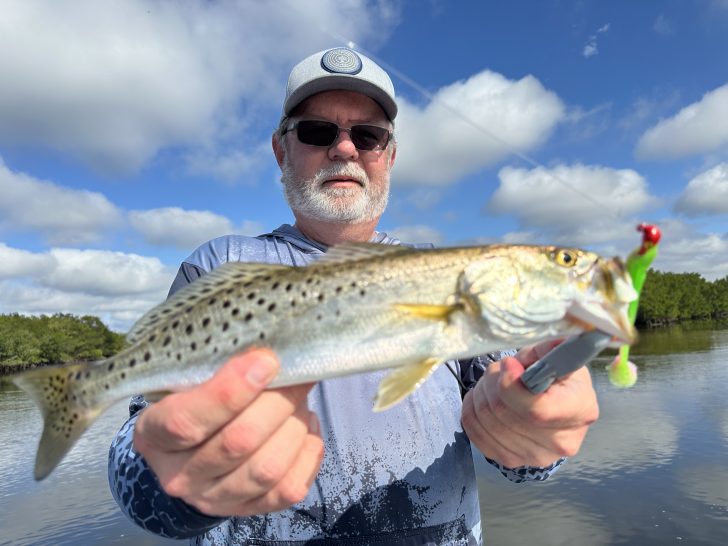Weather or Knot
February can go two ways, depending on the weather. So, based on the last few months, let’s start with an above average temperature scenario. The snook will be along mangroves that have easy access to deep water in case the water temperature starts to drop. Big Island flats at the northwest end of Howard Frankland bridge have a deep-water channel between Big Island and the shoreline. Although the charts show it as a 1 to 2 feet of depth, in truth, the channel is over 10 feet deep with an old barge lying on its side, an absolute favorite of redfish, snook, trout and mangrove snapper.
The old barge sitting along the shore line can only be seen during the winter months with the extra low tides. It’s a great hang out for sheepshead, mangrove snapper and redfish with a falling tide.
The radio towers on the northwest side of Gandy bridge are another hot spot with plenty of rocks and a deep-water canal within easy reach, in case of a quick cold front. This is a great area for shore bound anglers from the end of the bridge west to where the mangroves start and it has plenty of deep water, which is a favorite of snook, trout, jacks and redfish.
Weedon Island will hold redfish and snook around the oyster bar at the entrance to Christmas Pass. Just outside, in the deeper water flats in 3 to 4 feet of water, you can find some above average trout and flounder.
If the weather is cold, everything changes and you need to look for the fish around deep-water canals and hot water runoff around the power plants and rivers.
Silver trout will more than keep the average angler active, so look for them in the main channel going into the St. Petersburg power plant or the south side of Port Tampa channel in about 30 to 40 feet. The big female sheepshead will have moved in from the Gulf to spawn in the deeper waters. I have the best results when water temperature hits below 65 degrees, which may not be good for snook but great for the big sheepshead.
Little Manatee river is a gold mine when the temperature drops below 65 degrees. Large schools of jacks will roam the river from the entrance all the way to the railroad bridge. Snook and redfish will hang around the points waiting for the bait getting pushed by the tides. Look for pot holes, an area where the tide has made a trench. I found some areas that drop as much as eight feet, and guess where the fish are staging–at the bottom of the pot holes.
Don’t worry about trying to catch the white bait (greenback sardines), as artificial baits and shrimp are the best winter bait. Artificial baits will out fish live sardines during the cold months, period.
Look for deep holes or cuts along the flats. Let the negative tides work in your favor. The fish have to find somewhere to go and, if you take some time, you can find the right spots that hold fish, The Fort DeSoto area is a great spot to start. There are still many old bomb holes left over from the early 50’s when the area was used as a bombing range.
Low winter tides and wind make a perfect combination to fish the many canals in the Apollo Beach area. As the sun hits the docks and seawalls, it radiates the heat into the water acting as a radiant heater drawing bait fish to it acting like a food court for the hungry redfish, sheepshead, snook and mangrove snapper.
So, after all has been said, its weather or knot and where to fish depends on the wind, weather and water temperature.

